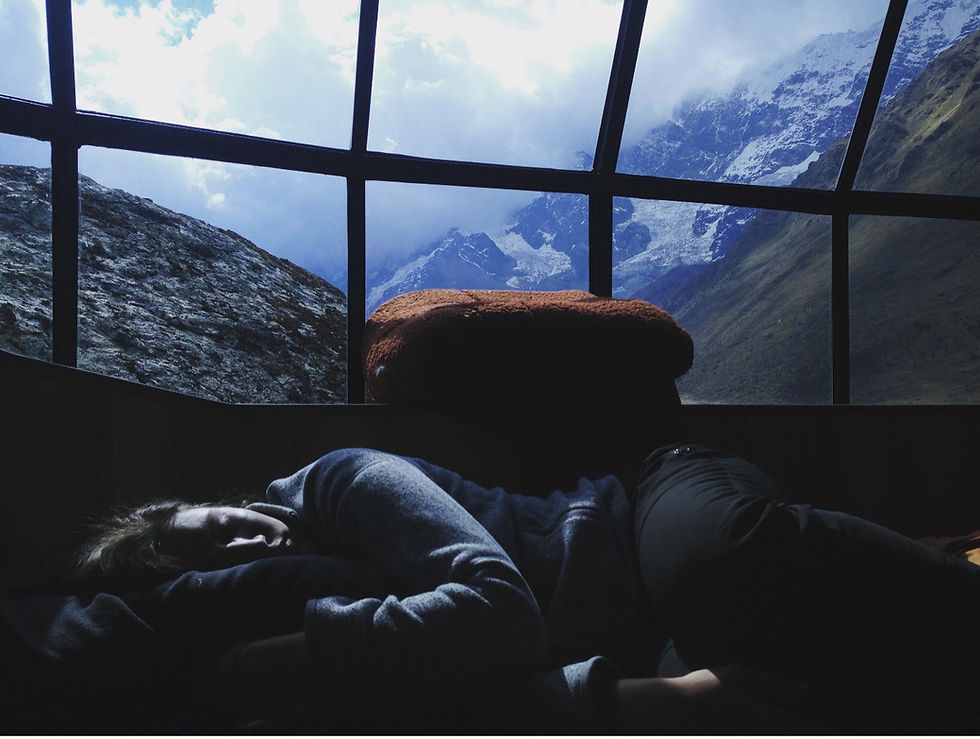Who Gives a Ruck: The Gym-Free Fitness Trend You Need to Know About
- Jo Soria

- Nov 21, 2023
- 3 min read
Ever get overwhelmed thinking about all the complicated workout routines or extensive equipment needed to meet your fitness goals? Then rucking might be a breath of fresh air for you. It's as simple—and as challenging—as carrying a weighted pack while walking. Let's break down the basics.

Rucking = Weight + Distance
But, is it really as simple as throwing on a weighted backpack and covering some ground? It can be.
"If you can walk, you can ruck," says Michael Easter, noted fitness writer and author of Scarcity Brain and The Comfort Crisis.
Naturally, if you want to dig deeper, there's a whole fitness genre dedicated to the finer aspects of rucking for peak performance. But it's the accessibility and straightforwardness of rucking that's got people talking.
Rucking strikes a refreshing middle ground—like Goldilocks' just-right bowl of porridge—between walking and running. With rucking, you get more of a challenge than your average walk, or weight-free hike can offer, but without the high impact of running. And the benefits don't stop there.
Benefits of Rucking
There's a reason rucking has exploded onto the fitness scene as an alternative to traditional workouts: it's a well-rounded, budget-friendly, and nature-oriented activity. More specifically:
It's an excellent workout for general conditioning and cardiovascular health. Burn fat and build core and lower body strength, all while getting some solid cardio work… and skipping the high impact.
It's an easily customizable experience. You can still enjoy a leisurely after-dinner stroll or match the kids' walking pace but with a bit of weight added to your pack to challenge yourself.
It's a solid way to unplug and connect with the outdoors. Change it with some rugged terrain, hit up the local park, or stick to the neighborhood; the choice is yours.

Wanna Give it a Shot? Here's How to Get Started
The good news is that you can give rucking a shot without a heavy upfront investment. Start with a sturdy backpack and fill it with items you may already have on hand—dumbbells, water bottles, books, bags of beans or rice, etc.
"People tend to get paralysis by analysis. Just throw some stuff in a backpack, go for a walk, and see how that feels," says Easter.
How much weight should you carry? Easter recommends about 15 to 30 pounds starting out, but remember: listen to your body on this one.
Safety First
Keep in mind that this improvised setup doesn't necessarily offer the optimal long-term solution; your items of choice will likely settle at the bottom or slide around in the pack, making for uneven weight distribution.
Unlike the average backpack, specialized rucksacks are built with overall support and performance in mind, so take it slowly and be careful not to overfill your starter pack. If you have to lean too far forward to maintain the load, you may be carrying too much. The goal is to challenge yourself while still being able to maintain good posture.
Ruck It, Let's Go
Don't get us wrong: there are some pretty elite gear options out there if you're looking to go all in on rucking for fitness. But if you're not quite ready to commit, a homemade ruck setup is an inexpensive way to see if rucking is something you'd enjoy investing in further.
Or, if nothing else, it offers an occasional shakeup to your current workout routine. We know we'll add it to our go-to list of fun, heart-healthy activities.
Do you ruck? Tell us about it! jo@trustedreferral.org NEXT: How Do Product Recalls Work?
Further Reading We're digging The Comfort Crisis by Michael Easter
Don't miss out on the latest wellness word-of-mouth topics from #TRN. Subscribe to Trusted Referral Network today.
.png)



Comments